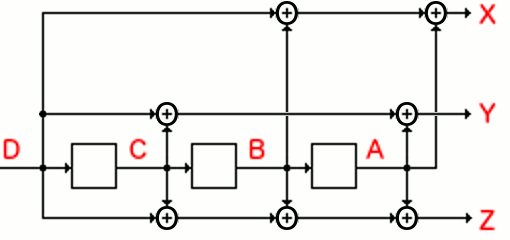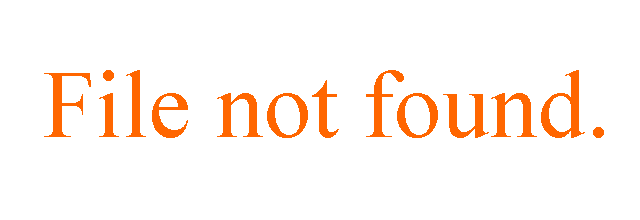

|
ECE4253 Digital Communications |
| Department of Electrical and Computer Engineering - University of New Brunswick, Fredericton, NB, Canada | |
Convolutional Coder (R=1/3, K=4)
This online tool passes data through this convolutional coder.

Input Bits (D)

Output Symbols (XYZ)
The initial state (CBA) of the flip flops is assumed to be 000. Three zeros are appended to the incoming data to flush the circuit and return to the 000 state at the end.
Can the message be recovered? - Try the Viterbi Decoder with the above encoded message.
|
Try this same data with different encoders: | R=1/2, K=3 | R=1/2, K=4 | R=1/3, K=4 | R=2/3, K=3 |
|
2024-05-05 18:07:37 ADT
Last Updated: 2011-09-08 |
Richard Tervo [ tervo@unb.ca ] | Back to the course homepage... |